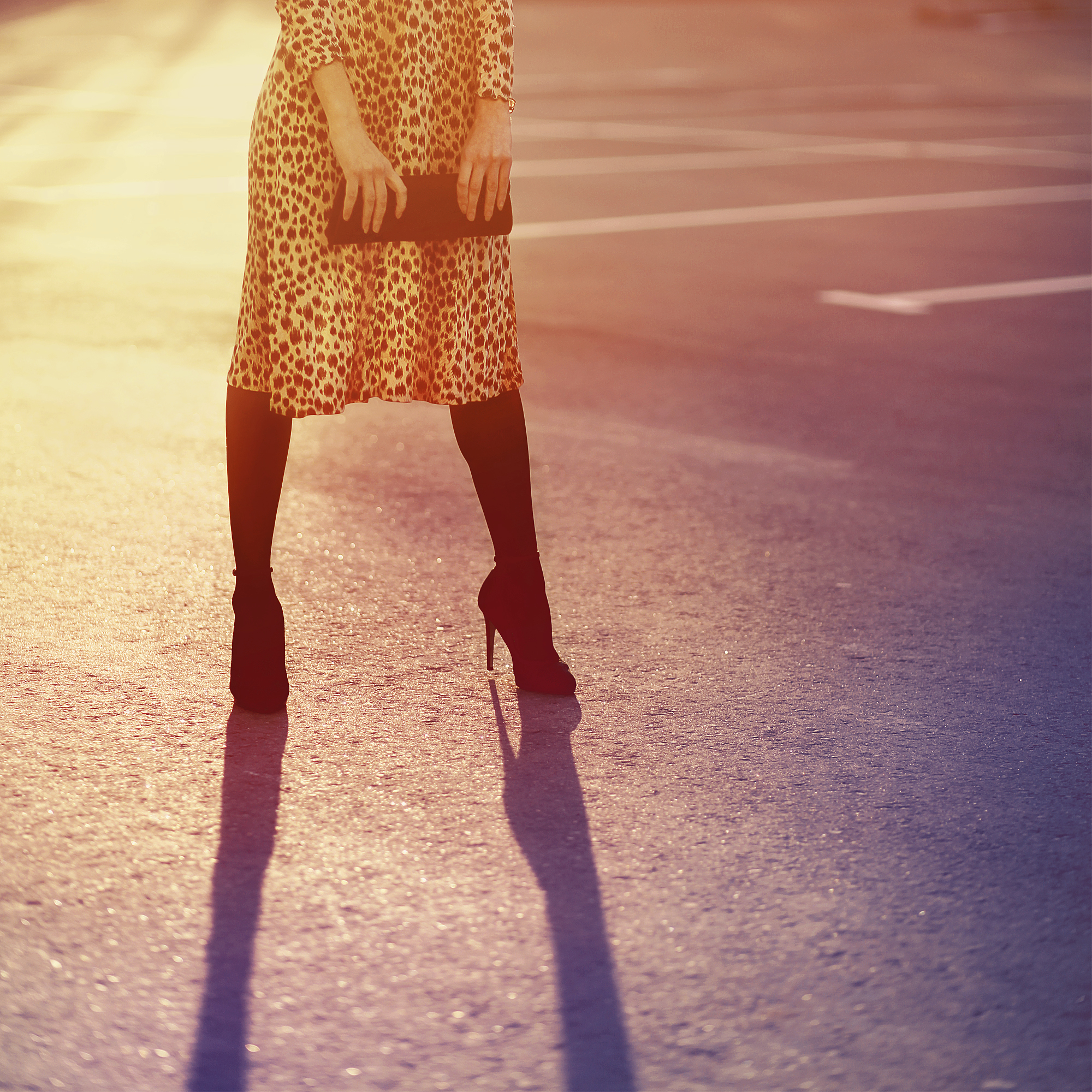It's easy to click around and find a bevy of royalty-free photos online, and if that doesn't work, it's also easy to pay a small fee to use a professional photo on your website. This is great, right? Not so much, according to the latest insights from visual content experts.
As it turns out, cheesy stock photos can be a huge turnoff to your readers because they're so impersonal. Simply put, most stock photos don't do a good job on their own of representing your brand.
What are stock photos?
A stock photo is an image – or other visual content – for which users can buy a license for creative or commercial use. Their primary appeal is that, instead of hiring a photographer to create original content when you need an image for commercial use, you can simply search a stock photo site for an appropriate image, then license and use it.
How do stock photos work?
In stock photography, the artist uploads a photo – or other visual content, such as illustrations, video clips or vector files – that they have taken, edited and finalized for creative use elsewhere, usually submitting it to a stock photo agency that splits license revenues with the photographer. In other words, stock photos give users the images they need – often without attribution requirements – and photographers an easier way to earn money for their work.
What kind of stock photos are buyers purchasing?
In stock photography, the most common buyer purchases include images of people, animals, food and travel destinations. Stock photos that buyers purchase fall into three main categories:
- Royalty-free image: When you buy a royalty-free image from a stock photo site, you can use it as many times as you like after you buy the license. Royalty-free images have no right to exclusivity, whereas other stock imagery categories may have this right.
- Rights-managed image: For competitive reasons, the buyer may demand terms in their stock image license that prevent other entities from using the same photo. Rights-managed images may have fluctuating market value based on their size, exclusivity rights and usage.
- Public domain: This category is free stock photos that you can use without buying a license. The free images that comprise this category have no usage limitations and generally do not require attribution.
What can stock photos be used for?
Stock photos for commercial use can be placed on websites and in marketing materials and editorial work – in fact, some stock photos can be used only for editorial purposes. The only real limit is that they cannot be used in materials related to illegal or morally sensitive areas, nor can they be resold or distributed.
How much do stock photos cost?
Other than free stock photos, you'll have to pay to use stock photos, and most stock photo sites charge less per image if you buy a subscription for a large number of photos. For example, iStock plans start at $12 per image and decrease to $8 per image as your plan size increases. Stock photo experts point to iStock, Shutterstock and Adobe Stock as the most affordable stock photo sites.
What are the pros and cons of stock photos?
Part of knowing what stock photos are is understanding their pros and cons. These are some of the pros of using stock photos:
- You can save the time and money of hiring a photographer.
- They are versatile enough for many uses.
- They are easily editable to fit your business needs.
- The subscription sites give you access to various high-quality images.
These are some potential drawbacks:
- You could unintentionally violate the license.
- The aesthetics may be too obviously intended for broad use and feel inauthentic to your target audience.
- The same images you use may show up in other companies' materials.
You can learn more about the potential pros and cons of stock images below. [Read related article: How to Compress Photos]
Why people don't like bad stock photos
Stock images have such a reputation there's even a Know Your Meme page dedicated to stock photo cliches. This page details some of the most bizarre standouts of the internet's multifaceted stock image repository.
It all began at the kickoff of 2011. On Jan. 3, The Hairpin featured an image set entitled "Women Laughing Alone With Salad." The post went viral without any written context, which just goes to show how many words a picture truly is worth.

The humor this image series elicits is based in eccentricity and the questions it raises. Why are there so many seemingly arbitrary images of ladies guffawing as they eat their salads? Where did they come from? Why are they so happy? Are their salads that delicious?
After the stock photo stint on The Hairpin, the Huffington Post ran a series entitled "This Week in Ridiculous Stock Photos." The archives from this series include "Business People Using Megaphones," "Distracted People Chopping Vegetables" and "Women Ignored by Men Over Tech Gadgets."
Online connoisseurs don't dislike stock photos so much as they don't take them seriously. The widespread appreciation of these images is based entirely on irony, especially among millennials. So, if you're trying to establish an online brand with a refined, elegant aesthetic, goofy stock photos aren't going to get you there.

Why good visual content matters
Visuals drive content creation these days, and there's a reason for it. A HubSpot aggregation of statistics offers the following insights:
- The human brain processes visual information 60,000 times faster than it processes textual information.
- Optimizing an article with visual elements gives it an average of 37% more engagement.
- Press releases with photos generate around 14% more views than those without photos.
With the conversion power of visual content, it's easy to understand why website designers default to stock photos. They're inexpensive, easy to find and imminently recognizable. So, what's the issue?
Because stock photos are so recognizable, they're overused. Consider the case of Jennifer Anderson, the internet's "Everywhere Girl." She posed for a photo shoot sometime in 1996, and her face was subsequently used in print by some of the biggest brands in the world, including Microsoft, the BBC, Greyhound Lines, Hewlett-Packard and Dell.
While stock photos are more varied now than they were in the '90s, any random image you choose from a source like iStock or Shutterstock is bound to come up on thousands of other websites. A reverse image search service like TinEye will prove it.
Here's a scary example. The first search result for "freedom" on Shutterstock is this "free happy woman enjoying nature." When you plug the same image into TinEye, it comes up more than 20,000 times on other websites – not the best way to represent your brand's individuality.

How bad stock photos impact your bottom line
Your website is one of the most important conversion tools your business has, and cheesy stock photos will only hinder the cause. According to a web design analysis from Marcel Digital, bad stock imagery isn't just generic and cheesy; it's also driving people away.
Bad stock images aren't friendly and inviting. Customers don't want to be talked at; they want to learn why and how your business can meet their needs. Stock photos come off as too salesy.
As a metaphor, consider what happens when you call a customer service line. In one scenario, a human being politely answers the phone and helps you solve a problem. In another scenario, you hear a pre-recorded voice and have to slog through the process of dialing a series of numbers to reach that same representative. Wouldn't you prefer the first option?
What to do instead of using bad stock photos
Humans rely on other humans to meet their needs, and stock photos, much like an automated customer service recording, can be impersonal and uninviting. Nobody wants to talk to a wall. Fortunately, there are a few ways to solve this problem. [Read related article: 10 Ways to Take Better Social Media Campaign Photos]

1. Choose better stock photos.
You don't have to rely on iStock or Shutterstock. Consider using a different stock image site, like one of the ones listed by Creative Boom. These sites have a more modern, artistic feel, and many images archived on these sites are free for anyone to use.
Wherever you search for images, Buffer recommends using specific terms that have to do with the image you have in mind, rather than the abstract concept or blog topic that image is supposed to represent.
For example, if you want a stock image to represent social media, search for an image of a keyboard, computer, laptop or mobile device. People connect much more readily with concrete images than with abstractions.
2. Make creative edits to stock photos.
Stock photography doesn't preclude you from using Photoshop or other photo-editing software to make the images your own.
Before you begin, always ensure you have the rights to doctor your chosen image. Then, you can overlay text or graphics, or make tonal edits using filters. Feel free to crop the image or reposition different elements to drive home your point.

3. Use your own photos.
If you want to feature people's faces on your site, stay far away from stock photos. Instead, show images of your employees. Remember the phone call metaphor? A customer service robot is to a stock photo as a human representative is to a genuine employee photograph.
Take a look at this study by MarketingExperiments, which compared conversions from a stock image to conversions from a photo of a company founder. Almost 35% more visitors signed up when they could connect to a real person.

Sites that sell stock photos
If you can't use your own photos, you can buy stock photos from many sites. These are just a few:
- iStock
- Shutterstock
- Adobe Stock
- Getty Images
- Pexels
- Depositphotos
- Stocksy
When it comes to your visual content, always choose authentic, relevant and realistic images. If a stock photo meets those criteria, it could be a good choice – unless it's also outdated and overused.
When using stock photography, always tread with care. When in doubt, hire a photographer. You'll probably be glad you did.
Anna Johansson contributed to the reporting and writing in this article.
